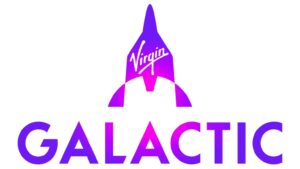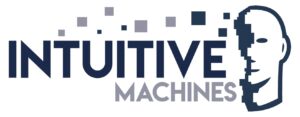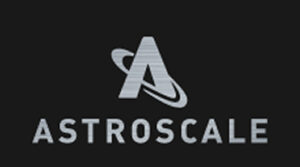The space sector is expanding rapidly, driven by technological advances and growing private sector involvement. Investors are turning their attention to companies working on satellite communications, reusable launch vehicles, orbital logistics, and deep space exploration. This article provides a curated list of promising space companies that are gaining attention from global markets and shaping the future of the commercial space industry.

1. AI Superior
At AI Superior, we approach artificial intelligence as a practical tool for reshaping industries, including those working with spatial and satellite data. Since 2019, we’ve combined technical expertise with a business-oriented mindset to help clients build scalable AI systems that improve operations and reduce risk. For investors looking at space companies to invest in, we represent a unique angle: while we don’t launch rockets or manufacture satellites, our AI solutions enhance how spatial data is interpreted and applied, especially in workflows previously dominated by traditional satellite providers.
We work with organizations that need precise, automated insight from spatial datasets, often in real time. From AI strategy and model development to full system deployment, our team of PhD-level scientists and engineers provides end-to-end support. In sectors like Earth observation, defense, and agriculture, we help bridge the gap between raw data and actionable intelligence. As geospatial demands continue to rise, we position ourselves as an essential layer in the new space ecosystem.
Key Highlights:
- Founded in 2019 by Dr. Ivan Tankoyeu and Dr. Sergey Sukhanov
- Specializes in AI for spatial and geospatial data
- Emphasizes scalable, production-ready systems
- Strong focus on project transparency and risk reduction
- Team includes PhD-level AI scientists and engineers
Services:
- AI and Data Strategy Development
- Process Optimization Using AI
- AI Use Case Identification
- Generative AI Integration
- AI Training and Workshops
Contact Information:
- Website: aisuperior.com
- Address: Robert-Bosch-Str.7, 64293 Darmstadt, Germany
- Contact Email: info@aisuperior.com
- Phone Number: +49 6151 3943489
- LinkedIn: www.linkedin.com/company/ai-superior
- Twitter: x.com/aisuperior
![]()
2. FlyPix AI
FlyPix AI operates at the intersection of artificial intelligence and geospatial intelligence, offering tools that reshape how spatial data is processed and understood. The company is especially relevant for those exploring space companies to invest in, as it delivers an accessible, no-code platform for analyzing aerial and satellite imagery without the need for traditional satellite infrastructure. By supporting multiple data sources, including drones, LiDAR, SAR, and hyperspectral sensors, FlyPix AI provides flexible solutions for monitoring change, detecting objects, and automating anomaly identification.
Their platform supports users ranging from individual analysts to large enterprise teams, enabling the development of custom AI models tailored to specific spatial challenges. Whether it’s environmental monitoring or tracking infrastructure development, FlyPix AI helps clients extract insights from geospatial data at scale. As demand for Earth observation increases and satellite imagery becomes more widespread, FlyPix AI represents a modern alternative within the expanding list of space companies to invest in.
Key Highlights:
- AI-powered no-code platform for geospatial analysis
- Supports drone, satellite, LiDAR, SAR, and hyperspectral data
- Positioned as a Maxar Technologies alternative
- Enables object detection and anomaly tracking
- Designed for use across agriculture, urban planning, and research
Services:
- Object Detection in Geospatial Imagery
- Change and Anomaly Analysis
- Time-based Object Tracking
- Custom AI Model Development
- GIS Platform Integration
- Spatial Heatmap Generation
Contact Information:
- Website: flypix.ai
- Address: Robert-Bosch-Str. 7, 64293 Darmstadt, Germany
- Phone: +49 6151 2776497
- Email: info@flypix.ai
- LinkedIn: www.linkedin.com/company/flypix-ai

3. Virgin Galactic
Virgin Galactic is a commercial spaceflight company focused on developing suborbital vehicles for passenger space tourism and scientific research. The company uses an air-launch system that combines a carrier aircraft with a rocket-powered spaceplane. After the retirement of its VSS Unity vehicle in 2024, Virgin Galactic is transitioning to its Delta-class spacecraft, which are expected to enter service in 2026 with higher flight cadence and reduced turnaround time.
Virgin Galactic operates from Spaceport America in New Mexico and maintains engineering facilities in Mojave, California. It offers brief suborbital flights for passengers and research payloads, providing several minutes of microgravity and a view of Earth’s curvature. The company has completed several test flights and a series of commercial missions before entering a pause in operations to prepare for Delta-class deployment. The business model is centered on recurring human flights with the ability to accommodate scientific experiments.
Key Highlights:
- Operates from Spaceport America and Mojave Air and Space Port
- Retired Unity spacecraft in 2024
- Delta-class vehicles in development for future flights
- Completed first commercial flight in June 2023
- Focuses on recurring suborbital passenger and research missions
Services:
- Suborbital flights for private passengers
- Microgravity research flight services
- Custom payload integration for suborbital platforms
- Astronaut training prior to launch
Contact and Social Media Information:
- Website: www.virgingalactic.com
- Address: 16555 Spaceship Landing Way, Mojave, CA 93501
- Phone: +1 (949) 774-7639
- E-mail: galactic.unite@virgingalactic.com
- LinkedIn: www.linkedin.com/company/virgin-galactic
- Twitter: x.com/virgingalactic
- Facebook: www.facebook.com/VirginGalactic

4. Boeing
Boeing is a multinational aerospace and defense company that develops and manufactures a wide range of space technologies through its Boeing Defense, Space & Security division. Its projects include satellite systems, human-rated spacecraft, and participation in large government-led exploration programs. Boeing is the prime contractor for the International Space Station and is responsible for developing the CST-100 Starliner spacecraft, designed to transport astronauts to and from low Earth orbit under NASA’s Commercial Crew Program.
In addition to human spaceflight systems, Boeing provides military satellite communication platforms, Earth observation payloads, and space-based surveillance infrastructure. It is also involved in the Space Launch System (SLS), a super heavy-lift vehicle developed under contract with NASA to support deep space missions, including the Artemis lunar campaign. The company manufactures most of its space hardware at facilities in California, Florida, and Alabama.
Key Highlights:
- Operates through Boeing Defense, Space & Security
- Developer of CST-100 Starliner spacecraft for NASA
- Key contractor for the ISS program
- Supplies space surveillance and communication satellites
- Participates in development of NASA’s SLS rocket
Services:
- Human-rated spacecraft development and integration
- Satellite design, testing, and deployment
- Launch system support and operations
- Defense and intelligence space systems
- Large-scale integration for exploration programs
Contact and Social Media Information:
- Website: www.boeing.com
- LinkedIn: www.linkedin.com/company/boeing
- Twitter: x.com/Boeing
- Facebook: www.facebook.com/Boeing
- Instagram: www.instagram.com/boeing

5. Blue Origin
Blue Origin is a privately held aerospace company that develops reusable launch vehicles, propulsion systems, and lunar landers. Founded in 2000, the company operates the suborbital New Shepard launch system for passenger and research missions and is preparing the orbital-class New Glenn rocket, which will support a range of commercial and government payloads. Blue Origin also manufactures rocket engines, including the BE-3 and BE-4, for internal and third-party use.
The company is part of NASA’s Artemis program through its development of the Blue Moon lander. It maintains production and testing facilities in Kent (Washington), Van Horn (Texas), Huntsville (Alabama), and Cape Canaveral (Florida). Blue Origin emphasizes full reusability of launch systems and is working on establishing a scalable infrastructure for frequent orbital and lunar missions. As of now, New Glenn has not yet flown.
Key Highlights:
- Operates New Shepard suborbital rocket for human and research flights
- Developing New Glenn orbital-class rocket
- Selected by NASA for Blue Moon lunar lander development
- Manufactures BE-3 and BE-4 rocket engines
- Facilities in multiple U.S. states including Florida and Texas
Services:
- Suborbital spaceflight for passengers and experiments
- Orbital launch services (planned via New Glenn)
- Rocket engine manufacturing for own and external use
- Lunar lander systems for government and commercial clients
- Mission payload integration and launch support
Contact and Social Media Information:
- Website: www.blueorigin.com
- E-mail: privacy@blueorigin.com
- LinkedIn: www.linkedin.com/company/blue-origin
- Twitter: x.com/blueorigin
- Facebook: www.facebook.com/blueorigin
- Instagram: www.instagram.com/blueorigin

6. SpaceX
SpaceX is a private aerospace company founded in 2002 that develops orbital rockets, spacecraft, and satellite systems. It is the manufacturer and operator of the Falcon 9 and Falcon Heavy launch vehicles and is currently developing the fully reusable Starship vehicle for interplanetary missions. The company provides satellite deployment services, resupply missions to the International Space Station (ISS), and crewed transport under NASA’s Commercial Crew Program.
In addition to launch operations, SpaceX manages the Starlink satellite constellation, designed to provide global broadband internet coverage. The company’s facilities include launch sites in Florida and California, a development center in Hawthorne, and test ranges in Texas. Its services are used by government agencies, commercial satellite operators, and international customers, making it one of the highest-frequency launch providers in the world.
Key Highlights:
- Manufacturer of Falcon 9 and Falcon Heavy rockets
- Developer of Starship super-heavy reusable vehicle
- Operator of Starlink internet satellite constellation
- Primary provider of NASA cargo and crew missions
- Launch sites include Cape Canaveral, Vandenberg, and Boca Chica
Services:
- Satellite launch services to low, medium, and geostationary orbit
- Crewed and cargo missions to the ISS
- Starlink satellite broadband services
- Rideshare and payload integration for small satellites
- Interplanetary launch vehicle development
Contact and Social Media Information:
- Website: www.spacex.com

7. Intuitive Machines
Intuitive Machines is a U.S.-based aerospace company that develops spaceflight systems for lunar surface missions. It is a NASA CLPS (Commercial Lunar Payload Services) provider and is responsible for the Nova-C lunar lander, designed to deliver scientific payloads to the Moon’s surface. The company also offers surface mobility, communications, and autonomous landing solutions.
Its lunar landers are equipped with precision navigation systems and can support a wide variety of customer payloads. Intuitive Machines operates facilities in Houston, Texas, and is part of NASA’s Artemis campaign, with scheduled launches under commercial contracts. The company is involved in supporting sustained lunar presence by enabling low-cost, uncrewed cargo delivery and communication networks.
Key Highlights:
- Developer of Nova-C lander for lunar payload delivery
- CLPS provider under NASA’s Artemis program
- Specializes in precision navigation and autonomous landing
- Based in Houston with in-house development and integration
- Focused on uncrewed lunar infrastructure support
Services:
- Payload delivery to the lunar surface
- Precision lunar navigation and guidance systems
- Lunar surface communication and data relay
- Autonomous landing technologies
- Mission integration and surface operations support
Contact and Social Media Information:
- Website: www.intuitivemachines.com
- Address: 13467 Columbia Shuttle Street, Houston, TX 77059
- Phone: 281.520.3703
- LinkedIn: www.linkedin.com/company/intuitive-machines
- Twitter: x.com/Int_Machines
- Facebook: www.facebook.com/IntuitiveMachines
- Instagram: www.instagram.com/intuitivemachines

8. Maxar
Maxar is a satellite technology and Earth intelligence company that develops high-resolution imaging systems and geospatial data platforms. The company designs and operates its own satellite fleets, providing imaging and mapping services to defense, intelligence, commercial, and humanitarian clients. Maxar is also a satellite bus manufacturer and delivers space infrastructure for interplanetary and robotic missions.
Maxar supports NASA missions such as the Lunar Gateway and the Psyche asteroid probe. It provides global satellite imagery, 3D terrain models, and geospatial analysis through its proprietary platforms. The company has production facilities in Colorado and California, and also offers data products used for environmental monitoring, security, and disaster response.
Key Highlights:
- Operates Earth observation satellite constellations
- Provides satellite buses for commercial and government use
- Supports NASA missions including Lunar Gateway and Psyche
- Offers mapping, 3D modeling, and AI-based analytics
- Serves defense, climate, and humanitarian sectors
Services:
- Satellite imaging and data distribution
- Spacecraft platform design and delivery
- AI-enhanced geospatial analytics
- Change detection and global monitoring
- Secure communication and space infrastructure
Contact and Social Media Information:
- Website: www.maxar.com
- Address: 3875 Fabian Way, Palo Alto, CA 94303
- Email: spacecommunications@maxar.com
- LinkedIn: www.linkedin.com/company/maxar-technologies-ltd
- Twitter: x.com/Maxar
- Facebook: www.facebook.com/MaxarTechnologies
- Instagram: www.instagram.com/maxartechnologies

9. Astroscale
Astroscale is a private company focused on orbital debris removal and in-space servicing. Founded in Japan, it operates internationally with subsidiaries in the U.S., UK, and Israel. Astroscale develops magnetic docking, inspection, and deorbiting technologies for both active and defunct satellites. The company works on commercial and government-funded missions to reduce collision risks and support orbital sustainability.
Astroscale’s projects include end-of-life satellite retrieval and on-orbit servicing demonstrations. It collaborates with regulatory agencies and commercial operators to define technical standards and policies for debris mitigation. Its long-term goal is to make debris removal a standard part of satellite operations.
Key Highlights:
- Headquartered in Japan with global subsidiaries
- Develops docking and deorbiting solutions for satellite cleanup
- Works with government and commercial partners
- Conducts orbital servicing and inspection missions
- Promotes space sustainability standards and practices
Services:
- End-of-life satellite retrieval
- On-orbit servicing and component replacement
- Magnetic docking system deployment
- Collision risk mitigation strategies
- Policy development for orbital traffic control
Contact and Social Media Information:
- Website: www.astroscale.com
- Address: 2201 S Delaware St, Denver CO 80223, United States
- LinkedIn: www.linkedin.com/company/astroscale
- Twitter: x.com/astroscale_HQ
- Facebook: www.facebook.com/Astroscale
- Instagram: www.instagram.com/astroscale

10. Astra
Astra is a U.S.-based launch services company that builds and launches small rockets designed for low Earth orbit payloads. It focuses on streamlining the launch process for small satellites through compact, mobile launch systems. Astra aims to enable high-frequency access to space by minimizing infrastructure and offering rapid launch capabilities from various locations.
The company operates a factory in Alameda, California, and previously conducted orbital launches from Pacific Spaceport Complex in Alaska. It targets both commercial and U.S. government clients with small payload deployment needs. Astra is currently transitioning between vehicle versions to increase performance and reliability.
Key Highlights:
- Specializes in lightweight orbital launch systems
- Designed for small satellite payloads
- Focuses on rapid, mobile launch capability
- Factory operations based in California
- Developing new launch vehicle iterations
Services:
- Small satellite launch to low Earth orbit
- Payload integration and flight readiness services
- Mobile launch operations
- Rideshare and dedicated mission options
- Mission logistics and ground support
Contact and Social Media Information:
- Website: astra.com
- Address: 1900 Skyhawk Street, Alameda, California 94501
- LinkedIn: www.linkedin.com/company/astraspace
- Twitter: x.com/Astra
- Instagram: www.instagram.com/astraspace
Conclusion
The space industry continues to evolve rapidly, offering a range of opportunities across commercial, scientific, and defense sectors. This list of space companies to invest includes organizations involved in launch services, lunar exploration, satellite technology, orbital logistics, and Earth observation. While their approaches and specializations differ, they all contribute to the infrastructure and operations that define modern space activity.
From large aerospace contractors to emerging private operators, these companies reflect a shift toward more frequent and diversified access to space. As global demand for space-based services increases, investors are watching closely how these players expand capabilities, enter new markets, and support long-term exploration efforts.
